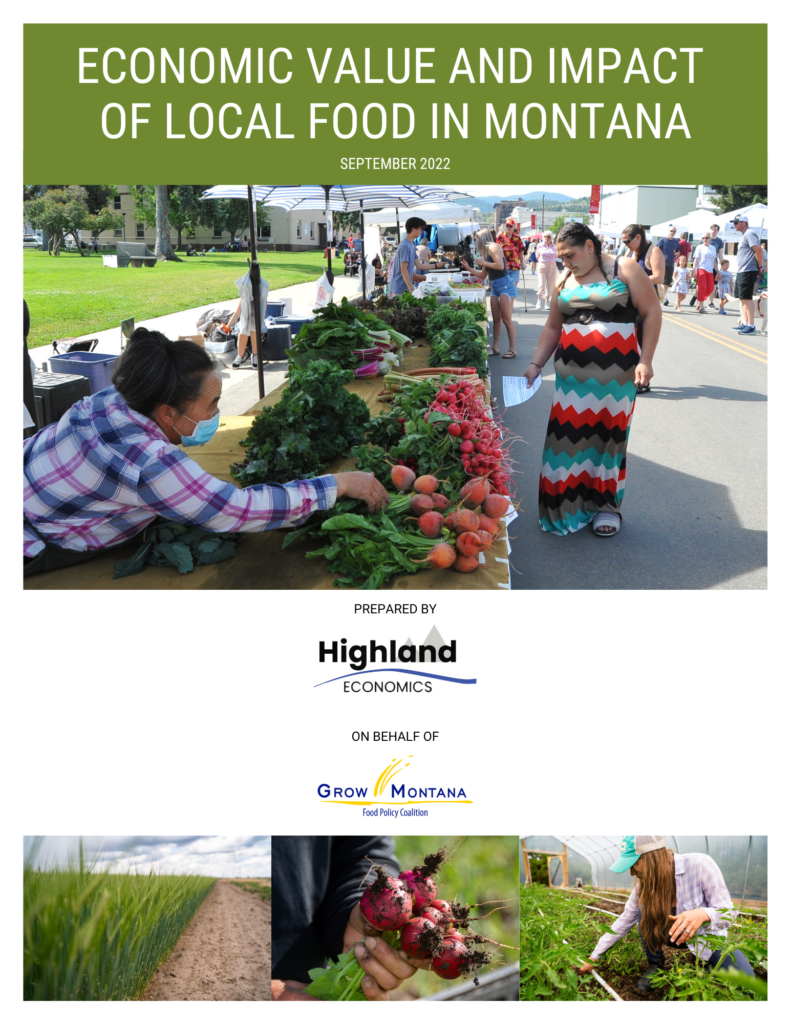Report: Montana-Grown Foods Contribute $160 Million to Local Communities
The Grow Montana Food Policy Coalition has released a new report showing locally grown and sold foods make a big impact to Montana communities. The report, “Economic Value and Impact of Local Food in Montana,” was completed by Highland Economics on behalf of the coalition. 
It shows locally grown Montana foods contribute $158 million to the state’s economy. The report evaluates the economic value of “local food,” food produced and consumed in the state of Montana without leaving the state for finishing and processing elsewhere. The full report can be downloaded HERE.
“The study delivers a comprehensive look at the Montana food value chain,” says Jan Tusick, Director at Mission Mountain Food Enterprise Center, in Ronan MT and member of Grow Montana’s steering committee. “The study will be a critical tool as we continue to build local food economies and the economic benefit to our Montana communities.”
Highland Economics began research in January of 2021, and interviewed local food consumers, producers, and intermediaries (processors and institutional buyers such as schools and hospitals) to understand the current climate of local food purchasing in the state. An extensive literature review on local foods in Montana and nationwide was also conducted.
Key Takeaways Include:
- $158 million is the estimated total of retail value of local food sales in Montana: $118 million comes from sales at stores, restaurants institutions, and processors. Direct-to-consumer sales, such as farmers markets, farms-stands, and community supported agriculture (CSAs) subscriptions account for $40 million in local food sales.
- Local food production in Montana supports 1,110 Montana jobs and supports $31.9 million in Montana labor income.
- Less capacity to process food in Montana: Montana employed 3,000 people in the food-processing sector in the 1950s and while the population has doubled there are only 2,647 people employed in this sector today (2021).
- More reliance on processing outside the state and distribution infrastructure: This is particularly evident in meat processing. Montana is known for animal production, cattle in particular. Even though the state has the third highest ratio of cattle to people across the U.S. most of the meat consumed in the state is imported (or re-imported) after it is finished and processed elsewhere.
- A smaller share of the retail spending on food goes back to the farm and ranch: The farm and ranch share of the food dollar spent by consumers in 1910 was 60%, and today it is estimated at 16%.



